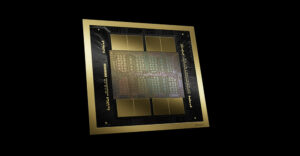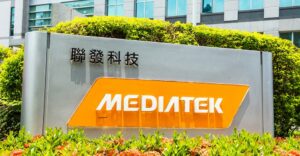
Summer is the time to relax, take in the weather and drink a Mint Julep … right? Someone should tattoo this information on the heads of a number of executives I know because this summer has been anything but relaxing and I still haven’t even seen a Mint Julep.
This last week was no exception, with Apple putting Google CEO Eric Schmidt on its board, which may signal an even bigger, later step. In addition, Intel announced vPro, which it hopes will do for the desktop what Centrino did for laptops.
I’ll talk about these first, followed by my third and final set of recommendations for late summer technology buys.
Anticipating an Apple-Google Merger
Back when I was a formal competitive analyst, I worked with one of the most advanced teams in the technology market. While we paled when compared to the vastly better funded and staffed teams in the pharmaceuticals industry, in our own industry, we were market leading. Part of what we did was profile CEOs to forecast future moves based on personality, age, health and past behavior.
For Apple, profiling Steve Jobs would probably give a more accurate measure of where that company is going than anything else, much like profiling Larry Ellison would do in Oracle’s case. As I, and others, have commented lately, however, Jobs isn’t looking healthy of late and his age does appear to be catching up with him. This suggests retirement or another path may be looking more and more attractive to him.
Jobs isn’t much of a technology buyer, but he did sell Next to Apple and, more recently, Pixar to Disney. Recall that he had been planning to completely separate from Disney before this move. This suggests that, perhaps now that his health isn’t what it once was, we may see a trend toward selling properties to other entities. This trend may be likely to accelerate as time goes on.
In addition to this, Jobs in the past was serving in a senior government position and rumor has it he only lost that when some of his questionable past practices came to light — which made the then-Clinton administration nervous. He is in a much better position now, in terms of popularity, and could likely play a big role in the next cycle of national elections but would need the freedom from Apple to do it properly.
He can’t sell to Microsoft. The antitrust issues alone would be near impossible to overcome. He can’t sell to Dell or HP because they simply wouldn’t buy. He can’t sell to Sony because culturally, it would be a train wreck, and Sony doesn’t have the resources. Of the new age companies (Google, Yahoo, etc.) that might be able to afford Apple, only Google is rumored to be looking at making a hardware play, and that firm really wants to take Microsoft on head to head. Google is certainly building that massive backbone of a network for something.
Culturally and physically, Apple and Google are relatively close, though, to make this work, both firms would need to continue to have diverse management teams. Too much integration would be a problem given Google’s lack of hardware knowledge. Still, the end result could be a platform play that eventually grows to rival .NET, and overnight, you have to admit, the result would change the landscape to an incredible degree. With Google’s CEO on the board, the transition could go amazingly easily.
I know, I know, merging with Google is probably as likely as Apple switching to Intel. Oh, wait …
Intel Secures the Desktop
Speaking of Intel, that firm made a strategic move in its battle with AMD to lock down the desktop and lock out competing vendors. vPro, which, surprisingly isn’t a horrid name, seems to have a lot going for it. First, it has a solid foundation for the platform in the firm’s best performing processor ever — the Core 2 Duo. Built on top of this, is a new standardized chipset with networking, hardware-based virtualization and Active Management Technology. Still awake?
OK, let’s cut through this. Basically it means the new desktop stuff is going to be faster, more secure and easier to manage. It also means that much of the management can be done before the operating system actually boots, which potentially provides enhanced protection for a variety of exposures, including the diabolical rootkits.
In addition, if a desktop is not behaving itself, for instance, if it has been turned into a Zombie machine, the admin can kick it off the network remotely. This means that you won’t need a technician as often if you have a desktop machine.
There are three things to think about here. One is that this only applies to desktop computers and typically only low-level dweebs get desktop computers these days. If you have any stature at all you have a laptop. Doing something similar with laptops remains difficult until we can assure they can connect to wireless networks securely without booting the operating system. This is not a trivial task given that most external wireless networks are not secure.
The second thing to consider is AMD’s response. This initiative is Intel-only right now, which means that the OEMs will have an AMD-based alternative out there shortly. Several may base their alternatives around Phoenix Technology’s Trusted Core architecture, and it appears this comes very close to what vPro offers.
Finally, vPro and its AMD-based counterparts really won’t provide their greatest benefits until Windows Vista — or maybe Apple Leopard — shows up next year. The combination is required for the greatest improvement, and is one, given the typical corporate sales cycle, most firms would choose to wait for. Still, vPro may be the best currently shipping product anticipating a Vista upgrade, and that does make it valuable for some this year.
Buying Guide III
Now for my final set of technology buying suggestions. Here are several products I’ve had a chance to use over the last several months that really stand out.
Toshiba Qosmio G35-AV660: This new model just came out. Just recently I took the older Toshiba Qosmio model with me on a vacation. Having used Tivo-to-Go to put my TV shows on the product, this became our TV on vacation and it was great for both keeping up on e-mail and catching up on my favorite episodes of “Stargate,” “Eureka,” and the nightly news. It has a big bright TV level screen and an upgraded processor, which makes it a decent gaming box. The older one is impressive, and the new model is even better.
Permlight LEDs: A few weeks ago I spoke about how you could save a ton on your electric bill if you could find LED based lights to use in your home. However, in that piece I concluded that few were available. Well, I’ve since found out I was wrong and replaced virtually all my lights with those from Permlight. Pulling about 2 Watts each (as apposed to 60 to 120 Watts) these have helped me cut my power usage substantially and they were incredibly easy to install into existing can fixtures. This might make for a nice end-of-summer project.
Blue Ant SuperTooth II Automotive Bluetooth Speaker Phone: I tried out a Bluetooth headset, some Bluetooth speakers and this device from Blue Ant. All were good, but the SuperTooth II stood out as incredibly useful. It has massive battery life and does a really good job of letting you keep your hands free in the car if your phone supports Bluetooth. I don’t drive anyplace without it anymore. At US$200, it isn’t cheap, but sometimes a little extra quality is worth it. Blue Ant is out of Australia of all places, which is becoming a really interesting place to watch all of a sudden.
Happy Labor Day, for those of you in the States. Take part of the day to think about where you’d like to be next year. As for me, I think I want to be in Australia, drinking something with an umbrella in it and not talking about Tom Cruise.
Rob Enderle is a TechNewsWorld columnist and the Principal Analyst for the Enderle Group, a consultancy that focuses on personal technology products and trends.





















































